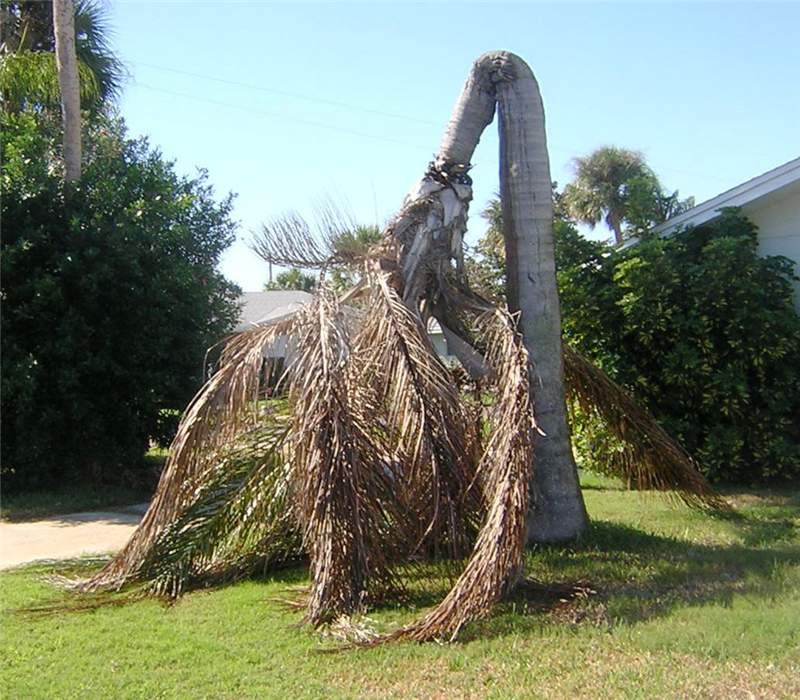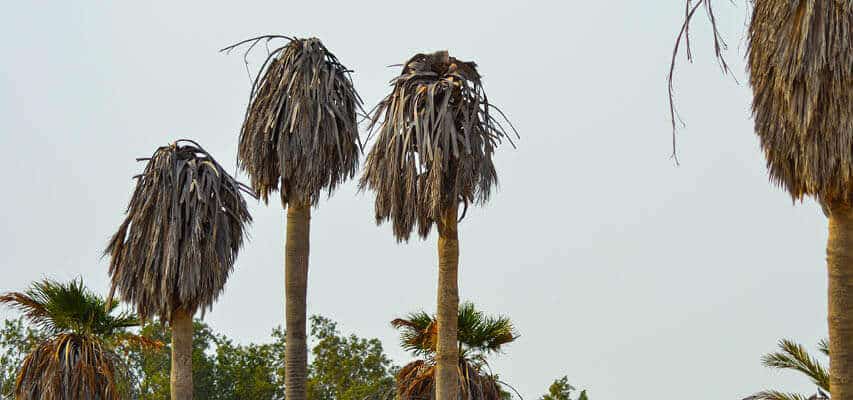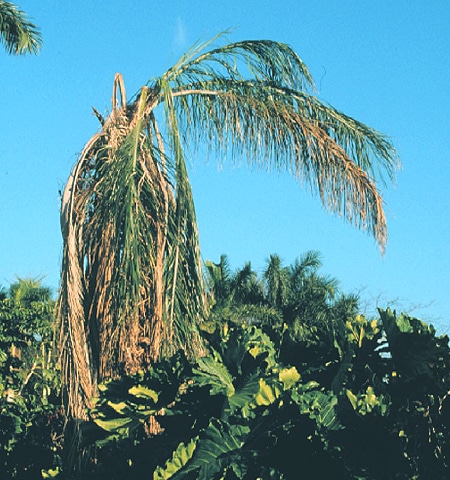Understanding Areca Palm: A Popular Choice in Florida Landscapes
The Areca Palm, scientifically known as Dypsis lutescens, stands out as a favored ornamental plant in Florida’s diverse landscapes. Its lush, feather-like fronds and ability to create a dense, privacy screen make it a top choice for homeowners and landscapers alike. Thriving in the state’s warm, humid climate, the Areca Palm adds a tropical flair to any setting. Originating from Madagascar, this palm species has adapted well to Florida’s environment, contributing to its widespread popularity.
Aside from its aesthetic appeal, the Areca Palm is celebrated for its air-purifying qualities, making it not just a decorative addition but also a beneficial one for improving indoor air quality. Its ease of care is another reason for its popularity; requiring moderate sunlight and water, the Areca Palm is suitable for a variety of landscape settings and can be grown both indoors and outdoors in Florida. However, despite its resilience, the Areca Palm is not immune to diseases, with certain conditions prevalent in the Florida region posing a threat to its health and longevity.
Understanding the basic care requirements and common challenges faced by Areca Palms in Florida is essential for anyone looking to incorporate these palms into their landscape. Proper knowledge and care can prevent common diseases and ensure that these palms remain a vibrant and healthy part of Florida’s landscapes. This section aims to provide a foundational understanding of the Areca Palm, setting the stage for a deeper exploration of the diseases that affect it and how to manage these issues effectively.
Common Diseases Affecting Areca Palms in Florida
In Florida, Areca Palms face several common diseases that can compromise their health and aesthetic appeal. Among these, Ganoderma Palm Disease and Fusarium Wilt are particularly noteworthy. Ganoderma Palm Disease, caused by the fungus Ganoderma zonatum, leads to a gradual decline in the palm’s health. Initially, it may be hard to detect, but over time, symptoms such as the appearance of a conk (a mushroom-like growth) at the base of the palm, and the yellowing and wilting of leaves become evident. This disease is lethal and currently, there is no cure, making early detection and removal of affected palms crucial to prevent its spread.
Fusarium Wilt, caused by Fusarium oxysporum, is another serious disease that affects Areca Palms in Florida. It is characterized by the one-sided yellowing and death of fronds, which can lead to the eventual death of the palm if not managed properly. Unlike Ganoderma, Fusarium Wilt spreads through contaminated soil and pruning tools, making sanitation a key preventive measure. Unfortunately, like Ganoderma, there is no cure for Fusarium Wilt, and affected palms should be removed to prevent the spread of the disease.
Additionally, areca palm yellowing leaves can be a symptom of various issues, including nutritional deficiencies or over-watering, which, while not diseases in themselves, can weaken the palm and make it more susceptible to serious diseases. Understanding these common diseases and their symptoms is the first step in protecting Areca Palms from the significant threats they face in Florida’s landscapes.

Identifying the Symptoms of Areca Palm Disease
Identifying the early symptoms of disease in Areca Palms is crucial for timely intervention and treatment. One of the most common indicators of an unhealthy Areca Palm is the yellowing of leaves. This symptom can be attributed to a variety of factors, including nutrient deficiencies, improper watering, or disease. In the context of diseases, yellowing leaves often signal the onset of Ganoderma Palm Disease or Fusarium Wilt, both of which are prevalent in Florida.
Ganoderma Palm Disease, caused by the fungus Ganoderma zonatum, leads to a general decline in the palm’s health. Initially, the lower leaves start yellowing and wilting, followed by a gradual progression to the upper leaves. Over time, the palm may develop a conk, a mushroom-like growth at its base, which is a definitive sign of Ganoderma infection.
Fusarium Wilt, on the other hand, is caused by Fusarium oxysporum, a soil-borne fungus. This disease typically manifests through one-sided yellowing and wilting of leaves, which eventually affects the entire frond. Unlike Ganoderma, Fusarium Wilt spreads from the soil to the plant, making early detection and isolation of affected palms critical to prevent widespread infection.
Other symptoms to watch for include stunted growth, unusual leaf spots, and the presence of pests, which can exacerbate the plant’s vulnerability to disease. Regular inspection of your Areca Palms for these signs can help in early identification and management of diseases, ensuring the health and longevity of these popular Florida landscape plants.
The Role of Climate in Areca Palm Diseases
The climate in Florida plays a significant role in the prevalence and severity of diseases affecting Areca palms. The state’s warm, humid conditions are ideal for the growth and spread of various pathogens, including fungi and bacteria that can cause serious harm to these plants. Areca palm yellowing leaves, a common symptom of distress, can often be attributed to the environmental stressors exacerbated by Florida’s climate.
During the wet season, excessive moisture can create a breeding ground for fungal diseases such as ganoderma palm disease and fusarium wilt in palms. These pathogens thrive in the damp soil and air, making Areca palms particularly vulnerable. The high humidity not only facilitates the growth of fungi but also aids in the spread of spores, which can quickly infect large areas of a landscape.
Conversely, during periods of drought or extreme heat, Areca palms may become stressed, weakening their natural defenses against pathogens. Stressed plants are more susceptible to infection and less capable of recovering from disease. Additionally, the stress from heat and insufficient water can mimic or exacerbate the symptoms of certain diseases, making diagnosis and treatment more challenging.
Understanding the impact of Florida’s climate on Areca palm health is crucial for effective disease management and prevention. By recognizing how environmental conditions influence disease prevalence and severity, gardeners, landscapers, and homeowners can take proactive steps to protect their Areca palms from the challenges posed by the state’s unique climate.

Preventative Measures for Healthy Areca Palms
Ensuring the health and longevity of Areca palms in Florida landscapes requires proactive and preventive measures. The key to preventing diseases in Areca palms begins with proper care and maintenance. First and foremost, it’s crucial to select the right planting location. Areca palms thrive in well-drained soil and areas that receive ample but indirect sunlight. Overexposure to direct sunlight can stress the plants, making them more susceptible to diseases.
Watering practices significantly influence the health of Areca palms. These palms prefer moist, but not waterlogged, soil conditions. Overwatering can lead to root rot diseases, while under-watering can stress the plant, leading to areca palm yellowing leaves and increased vulnerability to diseases. Implementing a consistent watering schedule based on the season and the plant’s growth stage is essential for maintaining optimal soil moisture levels.
Nutrition is another critical aspect of Areca palm care. A balanced, slow-release fertilizer applied during the growing season can provide the necessary nutrients for healthy growth and resistance against diseases. However, over-fertilization should be avoided as it can harm the plant and the environment.
Regular inspection and maintenance play a vital role in disease prevention. Periodically check for signs of stress or disease, such as yellowing leaves or unusual growth patterns. Early detection of symptoms can prevent the spread of diseases like ganoderma palm disease and fusarium wilt in palms. Pruning dead or infected fronds can also help prevent the spread of pathogens.
Finally, understanding the role of climate in areca palm diseases is crucial for prevention. Florida’s humid climate can foster the development of fungal diseases. Ensuring good air circulation around the palms and avoiding planting them too closely can help mitigate this risk. By adopting these preventative measures, gardeners and landscapers can ensure their Areca palms remain healthy and vibrant, contributing to the beauty of Florida landscapes.
Natural Solutions for Treating Areca Palm Diseases
When it comes to treating diseases in areca palms, many homeowners and gardeners in Florida prefer natural solutions. These methods are not only environmentally friendly but often safer for the plant, other beneficial organisms, and humans. Understanding and applying natural remedies can effectively manage and even prevent the spread of common diseases affecting areca palms.
One of the first steps in natural disease management is ensuring proper care and cultural practices. Areca palm care is crucial in preventing diseases. This includes adequate watering, ensuring the soil has good drainage, and providing the right amount of sunlight. Over-watering or poor drainage can lead to root rot diseases, while too little light can weaken the plant, making it more susceptible to infections.
For areca palm yellowing leaves, a common symptom of nutrient deficiency or over-watering, adjusting your watering schedule and ensuring the soil is well-draining can be effective. Additionally, applying organic mulch around the base of the palm can help retain soil moisture and provide essential nutrients as it decomposes.
Natural predators and beneficial insects can play a significant role in controlling pest populations that spread diseases. Introducing or encouraging ladybugs, lacewings, and beneficial nematodes in your garden can help manage pest outbreaks without the need for chemical treatments.
Neem oil is a natural, effective treatment for a variety of Florida palm tree diseases, including fungal infections like ganoderma palm disease and fusarium wilt in palms. It acts as an antifungal and insecticidal agent, helping to control both the disease and its vectors. Applying neem oil as a foliar spray or soil drench can provide a protective barrier against infections.
Lastly, removing and properly disposing of infected plant material is crucial in preventing the spread of disease. Pruning diseased fronds, sterilizing pruning tools between cuts, and avoiding overhead watering can significantly reduce the risk of disease transmission.
By adopting these natural solutions, gardeners and homeowners can effectively manage areca palm diseases, ensuring their palms remain healthy and vibrant components of the Florida landscape.

Chemical Treatments: When and How to Use Them Safely
Chemical treatments for areca palm diseases in Florida should be considered when natural solutions are insufficient or when the disease has progressed beyond initial stages. It’s crucial to identify the specific disease affecting your areca palm, as this determines the appropriate chemical treatment. For diseases like ganoderma palm disease and fusarium wilt, which are among the most devastating Florida palm tree diseases, targeted chemical interventions may be necessary.
Before applying any chemical treatment, it’s essential to read and follow the product’s instructions carefully to ensure the safety of the plant, yourself, and the environment. Protective gear, such as gloves and masks, should be worn to avoid direct contact with the chemicals. It’s also important to consider the timing of the application. Early morning or late afternoon applications can reduce the risk of chemical burn on the areca palm leaves, especially during hot days.
For areca palm yellowing leaves, which can be a symptom of nutrient deficiencies or specific diseases, a balanced, slow-release fertilizer with micronutrients may be beneficial. However, if the yellowing is due to a fungal infection, fungicides may be required. Always ensure the product is labeled for use on areca palms and is effective against the specific pathogen involved.
In cases of severe infections, systemic treatments that are absorbed by the palm and protect it from the inside out can be more effective than topical applications. However, systemic treatments should be used judiciously, as they can impact beneficial insects and the surrounding ecosystem.
Finally, it’s vital to integrate chemical treatments with cultural and mechanical control methods for a comprehensive approach to disease management. Regular maintenance and inspection, as discussed in other sections, remain key to preventing disease outbreaks and ensuring the long-term health of your areca palms.
The Importance of Regular Maintenance and Inspection
Regular maintenance and inspection play a crucial role in the health and longevity of Areca palms, especially in the Florida climate where conditions are ripe for various palm tree diseases. By establishing a routine for inspecting your palms, you can detect early signs of distress, such as areca palm yellowing leaves, which may indicate a broader range of issues including nutrient deficiencies or disease presence like ganoderma palm disease or fusarium wilt in palms.
Inspection should be thorough, examining not just the leaves, but also the trunk, roots, and the surrounding soil. Look for signs of decay, unusual growths, or changes in leaf texture and color. Early detection of these symptoms can be the difference between saving a plant and losing it to disease. Regular maintenance also includes proper watering, fertilizing, and pruning practices. Over or under-watering can stress the plants, making them more susceptible to diseases. Similarly, incorrect fertilization can either lead to nutrient burn or deficiency, both of which weaken the palm.
Pruning is equally important; removing dead or dying fronds can help prevent the spread of disease and pests. However, it’s crucial to sterilize pruning tools between uses to avoid transferring pathogens from one plant to another. Additionally, maintaining a clean environment around your palms by removing debris and fallen leaves can reduce the risk of fungal and bacterial diseases.
Implementing these preventative measures can significantly reduce the incidence of disease in Areca palms. By dedicating time to regular maintenance and inspection, you not only protect your palms from disease but also promote their overall health and vitality, ensuring they remain a vibrant part of your Florida landscape for years to come.
Recovering from Areca Palm Disease: Steps for Revival
Reviving an areca palm from the brink of disease requires patience, proper care, and timely intervention. The first step towards recovery is accurately diagnosing the disease, which could range from the common ganoderma palm disease to fusarium wilt in palms. Once the disease is identified, the appropriate treatment method should be applied. For fungal infections like ganoderma, removing the affected parts and applying fungicides may be necessary. In the case of fusarium wilt, a more aggressive approach might be needed, as this disease is notoriously difficult to manage once it has taken hold.
Improving the overall care of your areca palm is crucial for its recovery. This includes ensuring it receives the right amount of water – not too much and not too little – as overwatering or underwatering can exacerbate health issues. Providing balanced nutrition through the application of appropriate fertilizers can also support the palm’s recovery. Areca palm care should also involve adjusting the plant’s exposure to sunlight, as too much direct sun can stress a recovering palm.
Monitoring the palm after treatment is essential to ensure the disease does not return. Regular inspection of the leaves for signs of yellowing or other symptoms can help catch any resurgence of disease early. Additionally, maintaining a clean environment around the palm by removing fallen leaves and debris can prevent the spread of pathogens.
Finally, understanding that some diseases may leave lasting effects on your palm is important. In some cases, complete recovery may not be possible, and focusing on the health of new growth may be more beneficial. With consistent care and attention, your areca palm can overcome disease and continue to thrive in your Florida landscape.
Future-Proofing Your Areca Palms Against Disease
Ensuring the long-term health and beauty of your areca palms in Florida’s unique climate requires a proactive approach to disease prevention. Future-proofing your areca palms against disease is not only about treating current issues but also about implementing strategies to prevent future outbreaks. One of the key aspects of this approach is understanding the specific environmental conditions and care practices that make areca palms thrive.
Firstly, selecting the right location for your areca palms is crucial. These palms prefer well-drained soil and areas that receive ample but indirect sunlight. Overexposure to direct sunlight or constant shade can stress the plants, making them more susceptible to diseases. Additionally, proper spacing between your palms will ensure adequate air circulation, reducing the humidity around the plants that can lead to fungal infections.
Watering practices significantly impact the health of areca palms. Over-watering can lead to root rot diseases, such as fusarium wilt, while under-watering can stress the plant, making it more vulnerable to pests and diseases. Implementing a consistent watering schedule that allows the soil to dry slightly between waterings can help prevent these issues.
Nutrition is another critical factor in disease prevention. Regularly applying a balanced, slow-release palm fertilizer can help maintain the health and vigor of your areca palms, making them more resilient to diseases. Be cautious of over-fertilization, as it can harm the palms.
Regular inspection and maintenance play a vital role in future-proofing your areca palms. Early detection of symptoms, such as areca palm yellowing leaves or signs of Florida palm tree diseases, allows for timely intervention before the disease spreads. Pruning dead or infected fronds can help prevent the spread of pathogens.
Finally, understanding and adapting to the role of climate in areca palm diseases is essential. As Florida’s weather can vary, being aware of the impact of seasonal changes on disease prevalence can guide your preventive measures. By integrating these strategies, you can effectively future-proof your areca palms against disease, ensuring their health and beauty for years to come.
